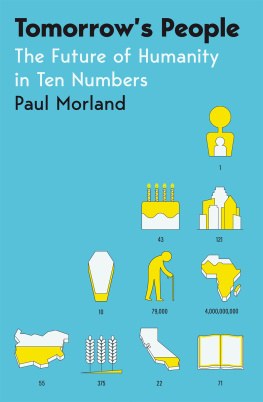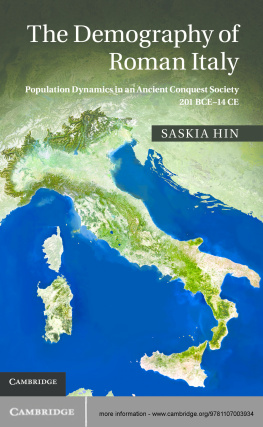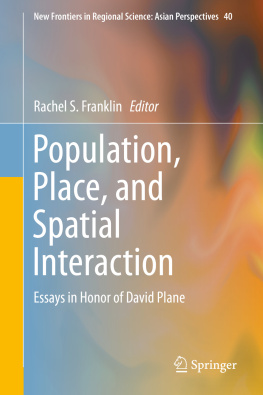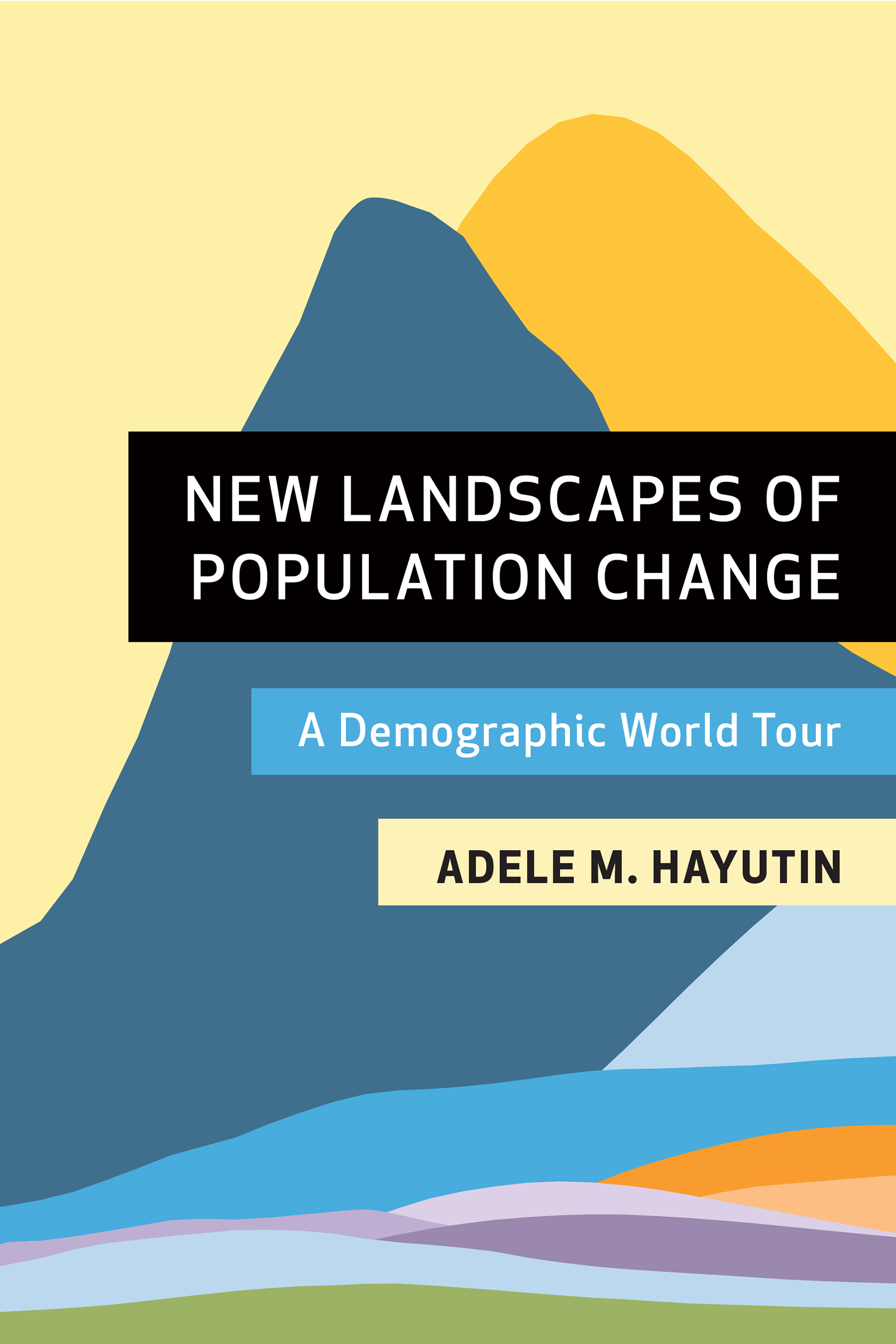Contents
Guide
ADVANCE PRAISE FOR
W LANDSCAPES OF POPULATION CHANGE
A must-read book if you want a clear-eyed view into the global impacts of ongoing, unprecedented demographic shifts. In this comprehensive tour de force, Dr. Hayutin brings to bear lens-changing data and the inexorable trends that must be understood and incorporated now into our national security strategies. An unmatched and invaluable resource.
General Jim Mattis, US Marines (ret.) and twenty-sixth Secretary of Defense
While democracy is destiny is an overstatement, anyone interested in national or global economic, financial, labor market, and political history and future challenges must understand demographic trends and their applications. Adele Hayutins insightful, beautifully illustrated New Landscapes of Population Change is the invaluable best place to start.
Michael J. Boskin, Tully M. Friedman Professor of Economics and Wohlford Family Senior Fellow, Hoover Institution, Stanford University; and former chair, Presidents Council of Economic Advisers
As Adele Hayutin shows in this stunning and vividly illustrated analysis, historic shifts are under way in global population dynamics. Wealthier countries will see their populations age and shrink due to declining fertility, while todays poorer countries will continue to experience rapid population growth for decades to come. These changes will heavily influence employment needs and opportunities, migration patterns, economic growth, environmental sustainability, political power, and social stability. Policy makers, business leaders, and thoughtful citizens worldwide will benefit enormously from reading this work.
Larry Diamond, senior fellow, Hoover Institution; and Mosbacher Senior Fellow in Global Democracy, Freeman Spogli Institute for International Studies, Stanford University
Population changes and demographics will change all our lives. The analyses are critical, and the demographic trends and figures are riveting. It is a view into the future, for business, policy, development, and foreign affairs leaders and students.
Henrietta Fore, former executive director of UNICEF, former administrator of USAID, and former director of foreign assistance, US Department of State
The author has provided us with an invaluable source of easily accessible data on the worlds demographic future. As a real estate and urban economist, I have long considered demographic data the key to any medium- or long-term projections on economic and real estate markets on a metropolitan and countrywide basis. The authors analysis showing the explosive population growth projected for Africa and projected dramatic decline in population for Europe, China, and Japan should be a critical input for business leaders and policy makers. I especially like the graphics showing the role of alternative assumptions for Africa. The authors work begs for an interactive version with an ability to simulate different assumptions and policy levers that may change a countrys demographic destiny. This book is essential reading for any global business and policy leader.
Ken Rosen, chairman of the Fisher Center for Real Estate and Urban Economics, Haas School of Business, University of CaliforniaBerkeley
With the deft perception of an experienced analyst, Hayutin lays out population and age structure data and insights within and across nations. The demographics reveal critical risks and opportunities and inform possibilities and priorities from finance and markets to agriculture and industry to policy and politics.
Sue Wagner, co-founder, BlackRock
I dare you to read the first five pages of this document. I guarantee that if you do, you wont be able to put it down. This report features characters and plot that give any page-turner a run for its money. But this is no work of fiction: it is truthor as close to it as the UN data allow. The plot is fascinating and full of suspense. But what is most compelling is that this tale has no ending. Ultimately, we are the authors of this story.
George P. Shultz, former secretary of state, on a precursor to New Landscapes of Population Change
NEW LANDSCAPES OF POPULATION CHANGE

 With its eminent scholars and world-renowned library and archives, the Hoover Institution seeks to improve the human condition by advancing ideas that promote economic opportunity and prosperity, while securing and safeguarding peace for America and all mankind. The views expressed in its publications are entirely those of the authors and do not necessarily reflect the views of the staff, officers, or Board of Overseers of the Hoover Institution.
With its eminent scholars and world-renowned library and archives, the Hoover Institution seeks to improve the human condition by advancing ideas that promote economic opportunity and prosperity, while securing and safeguarding peace for America and all mankind. The views expressed in its publications are entirely those of the authors and do not necessarily reflect the views of the staff, officers, or Board of Overseers of the Hoover Institution.
hoover.org
Hoover Institution Press Publication No. 727
Hoover Institution at Leland Stanford Junior University
Stanford, California 94305-6003
Copyright 2022 by the Board of Trustees of the Leland Stanford Junior University
All rights reserved. No part of this publication may be reproduced, stored in a retrieval system, or transmitted in any form or by any means, electronic, mechanical, photocopying, recording, or otherwise, without written permission of the publisher and copyright holders.
For permission to reuse material from New Landscapes of Population Change: A Demographic World Tour, ISBN 978-0-8179-2535-2, please access copyright.com or contact the Copyright Clearance Center Inc. (CCC), 222 Rosewood Drive, Danvers, MA 01923, 978-750-8400. CCC is a not-for-profit organization that provides licenses and registration for a variety of uses.
Efforts have been made to locate the original sources, determine the current rights holders, and, if needed, obtain reproduction permissions. On verification of any such claims to rights in the articles reproduced in this book, any required corrections or clarifications will be made in subsequent printings/editions.
Cover illustration by Howie Severson, based on Adele Hayutins chart of the global landscape of workforce growth (see ).
First printing 2022
282726252423227654321
Cataloging-in-Publication Data is available from the Library of Congress.
ISBN: 978-0-8179-2535-2 (pbk)
ISBN: 978-0-8179-2536-9 (epub)
ISBN: 978-0-8179-2538-3 (PDF)
In memory of George P. Shultz with gratitude for his inspiration and constant encouragement
and
for Elena, Leo, Bianca, Chloe, and Lucamy five grandniblings who have taught me so much. I hope you will be inspired to explore the trends shaping your future and to apply your creativity to global problems.
CONTENTS
NOTE TO THE READER ON DATA SOURCES AND NOMENCLATURE
Except where noted, this book uses population estimates and projections from the United Nations, World Population Prospects 2019, medium variant. The analysis in the book relies on the UNs classification of geographic regions and subregions as well as aggregations for income and development groups. For ease of reference, this book uses familiar names for selected geographic areas and countries, for example, East Asia instead of Eastern Asia, and South Korea instead of Republic of Korea. See the Appendix for the UN classification of countries by region and subregion.











 With its eminent scholars and world-renowned library and archives, the Hoover Institution seeks to improve the human condition by advancing ideas that promote economic opportunity and prosperity, while securing and safeguarding peace for America and all mankind. The views expressed in its publications are entirely those of the authors and do not necessarily reflect the views of the staff, officers, or Board of Overseers of the Hoover Institution.
With its eminent scholars and world-renowned library and archives, the Hoover Institution seeks to improve the human condition by advancing ideas that promote economic opportunity and prosperity, while securing and safeguarding peace for America and all mankind. The views expressed in its publications are entirely those of the authors and do not necessarily reflect the views of the staff, officers, or Board of Overseers of the Hoover Institution.